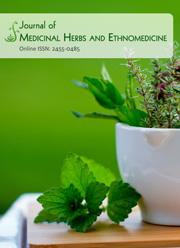Bifunctional eff ect of fucoidan from Padina tetrastromatica against human pathogenic microbes and free radicals
DOI:
https://doi.org/10.19071/jmhe.2016.v2.2995Abstract
The antibacterial and antioxidant effect of fucoidan fractions isolated from brown algae Padina tetrastromatica was evaluated. Even though the polysaccharide was found to be a fucan, the composition of this polysaccharide is different from those reported, and the antibacterial and antioxidant effect has not been reported so far. Three fractions (F1, F2, and F3) were isolated by anion-exchange column chromatography. Chemical analysis suggested that the polysaccharide fractions contained a significant amount of sulfate and fucose, galactose xylose, and
mannose as the major neutral sugars. Antibacterial activity was checked by disk diffusion method. Antioxidant activity was investigated by various in vitro systems, including 1,1-diphenyl-2-picrylhydrazyl radical scavenging,
lipid peroxide inhibition, superoxide and hydroxyl radical scavenging activity, chelating ability and reducing
power. Antibacterial and antioxidant assays suggested that the polysaccharide fraction F3 possessed good
antibacterial activity and had stronger antioxidant properties than F1 and F2. Available data obtained by in vitro
models suggested that the correlation between the sulfate content and pharmacological effect was positive.
Fucoidan from P. tetrastromatica have the potential to be developed as anantibacterial and antioxidant agent, but
further in vivo research for their mode of action are still needed to shed light on the effects. Overall, the present
experiments showed fucoidan from marine brown algae as a potential therapeutic agent.



 .
.